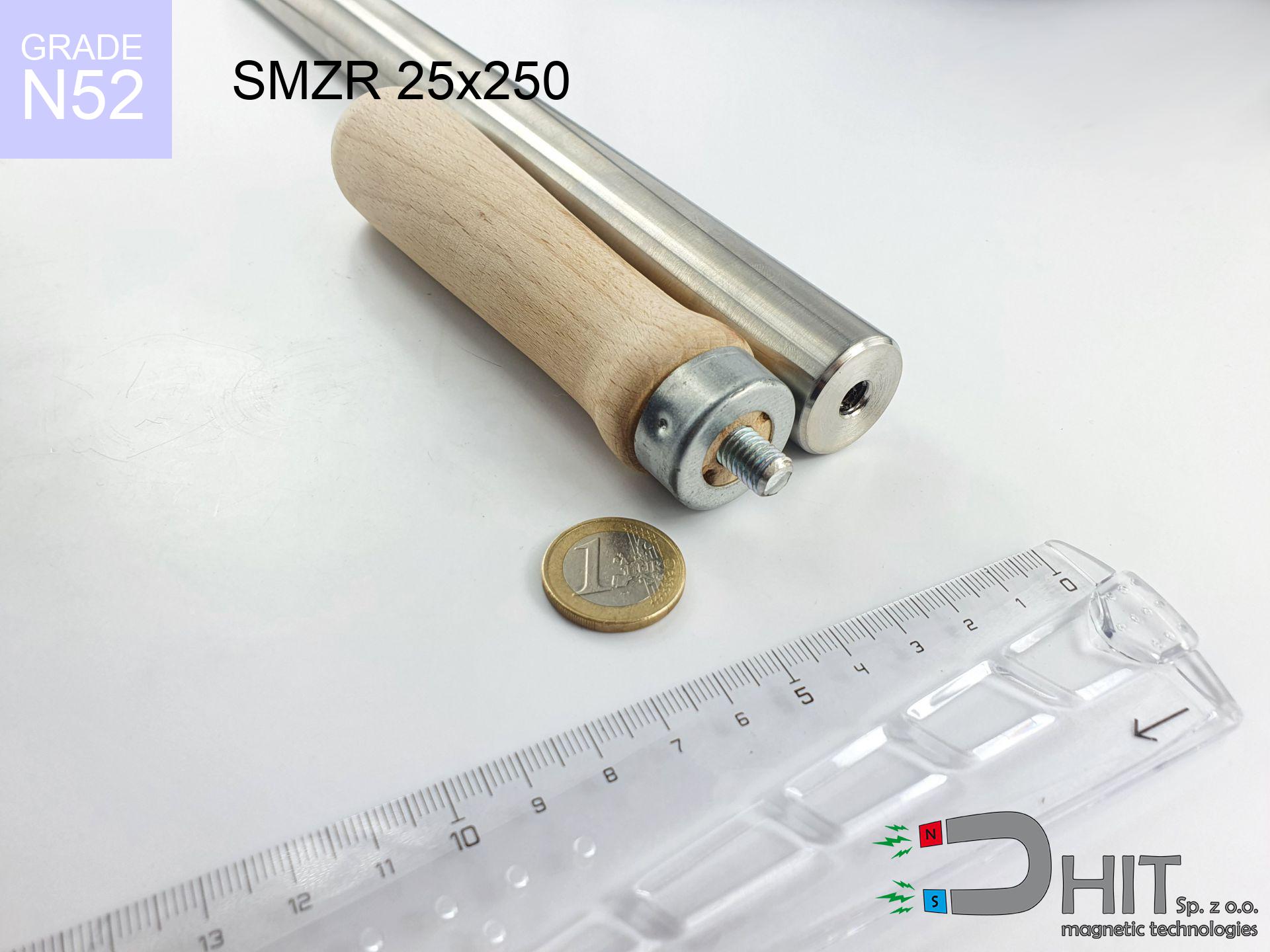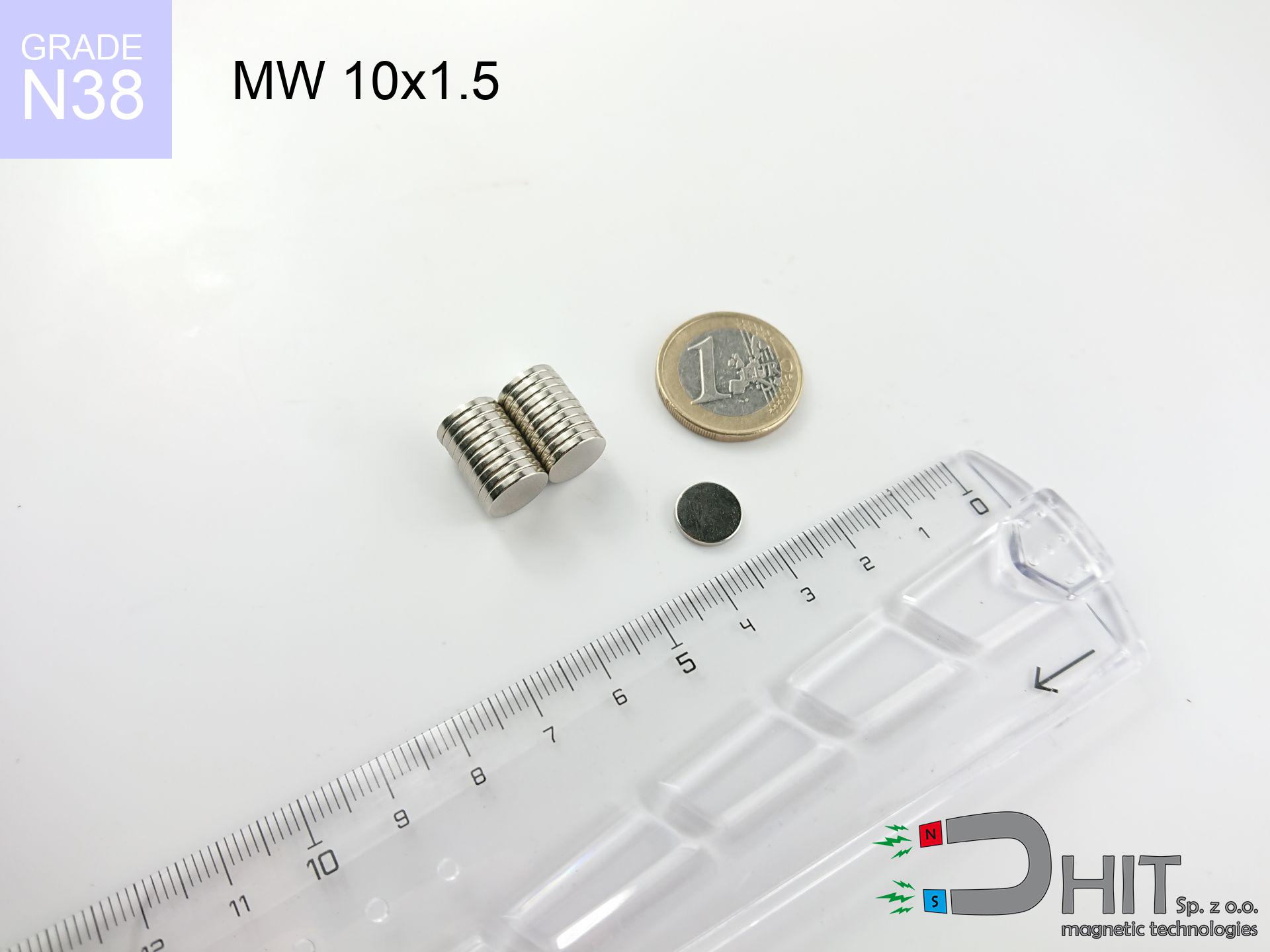SMZR 25x250 / N52 - magnetic roller
magnetic separator with handle
catalog number 140236
GTIN: 5906301813446
diameter Ø
25
mm [±0,1 mm]
height
250
mm [±0,1 mm]
max. temperature
≤ 80
°C
catalog number 140236
GTIN: 5906301813446
diameter Ø
25 mm [±0,1 mm]
height
250 mm [±0,1 mm]
max. temperature
≤ 80 °C
676.50 ZŁ gross price (including VAT) / pcs +
550.00 ZŁ net price + 23% VAT / pcs
bulk discounts:
need more quantity?Don't know what to buy?
Call us tel: +48 888 99 98 98 or contact us through contact form on the contact page. You can check the mass and the appearance of neodymium magnet in our magnetic mass calculator magnetic mass calculator
Orders placed by 2:00 PM will be shipped on the same business day.
Specification: magnetic separator with handle 25x250 / N52
Magnetic properties of the material N52
Physical properties of sintered neodymium magnets Nd2Fe14B
Shopping tips
Advantages as well as disadvantages of neodymium magnets NdFeB.
In addition to immense strength, neodymium magnets have the following advantages:
- They do not lose strength over time - after 10 years, their power decreases by only ~1% (theoretically),
- They protect against demagnetization caused by external magnetic field very well,
- In other words, thanks to the glossy nickel, gold, or silver finish, the element gains an visually attractive appearance,
- They exhibit extremely high magnetic induction on the surface of the magnet,
- Magnetic neodymium magnets are characterized by very high magnetic induction on the surface of the magnet and can operate (depending on the shape) even at temperatures of 230°C or higher...
- The ability for precise shaping or customization to specific needs – neodymium magnets can be produced in various forms and dimensions, which enhances their versatility in applications.
- Significant importance in advanced technologically fields – are used in HDD drives, electric drive mechanisms, medical apparatus or other highly developed apparatuses.
Disadvantages of neodymium magnets:
- They are fragile when subjected to a powerful impact. If the magnets are exposed to impacts, we recommend using magnets in a metal holder. The steel housing in the form of a holder protects the magnet from impacts, and at the same time increases its overall strength,
- They lose power at high temperatures. Most neodymium magnets experience permanent loss of strength when heated above 80°C (depending on the shape and height). However, we also offer special magnets with high temperature resistance, up to 230°C,
- Due to their susceptibility to corrosion in a humid environment, we suggest using waterproof magnets made of rubber, plastic, or other moisture-resistant materials when using them outdoors,
- The use of a cover - a magnetic holder is recommended due to the limited production capabilities of creating threads or complex shapes in the magnet
- Potential hazard to health from tiny fragments of magnets are risky, if swallowed, which is particularly important in the context of children's health. Additionally, tiny parts of these magnets are able to complicate diagnosis after entering the body.
Exercise Caution with Neodymium Magnets
Do not give neodymium magnets to youngest children.
Neodymium magnets are not toys. You cannot allow them to become toys for children. In such a situation, surgery is necessary to remove them. In the worst case scenario, it can result in death.
Keep neodymium magnets away from GPS and smartphones.
Neodymium magnets are a source of intense magnetic fields that cause interference with magnetometers and compasses used in navigation, as well as internal compasses of smartphones and GPS devices.
Neodymium magnets can demagnetize at high temperatures.
Even though magnets have been observed to maintain their efficacy up to temperatures of 80°C or 175°F, it's essential to consider that this threshold may fluctuate depending on the magnet's type, configuration, and intended usage.
The magnet is coated with nickel. Therefore, exercise caution if you have an allergy.
Studies show a small percentage of people have allergies to certain metals, including nickel. An allergic reaction often manifests as skin redness and rash. If you have a nickel allergy, try wearing gloves or avoid direct contact with nickel-plated neodymium magnets.
Neodymium magnets should not be near people with pacemakers.
Neodymium magnets produce strong magnetic fields that can interfere with the operation of a heart pacemaker. However, if the magnetic field does not affect the device, it can damage its components or deactivate the device when it is in a magnetic field.
Comparing neodymium magnets to ferrite magnets (found in speakers), they are 10 times more powerful, and their strength can shock you.
Please review the information on how to handle neodymium magnets and avoid significant harm to your body, as well as prevent unintentional damage to the magnets.
Neodymium magnets are primarily characterized by their significant internal force. They attract to each other, and any object that comes in their way will be affected.
Magnets will crack or alternatively crumble with uncontrolled joining to each other. You can't approach them to each other. At a distance less than 10 cm you should have them very strongly.
Neodymium magnetic are extremely fragile, resulting in shattering.
Neodymium magnetic are delicate as well as will shatter if allowed to collide with each other, even from a distance of a few centimeters. They are coated with a shiny nickel plating similar to steel, but they are not as hard. In the case of a collision between two magnets, there can be a scattering of small sharp metal fragments in different directions. Protecting your eyes is essential.
Dust and powder from neodymium magnets are highly flammable.
Do not attempt to drill into neodymium magnets. Mechanical processing is also not recommended. If the magnet is crushed into fine powder or dust, it becomes highly flammable.
Under no circumstances should neodymium magnets be placed near a computer HDD, TV, and wallet.
Neodymium magnets produce intense magnetic fields that can damage magnetic media such as floppy disks, video tapes, HDDs, credit cards, magnetic ID cards, cassette tapes, or other devices. They can also damage devices like video players, televisions, CRT computer monitors. Do not forget to keep neodymium magnets at a safe distance from these electronic devices.
To raise awareness of why neodymium magnets are so dangerous, see the article titled How very dangerous are powerful neodymium magnets?.





![magnetic holder rubber internal thread 66x8.5 [M8] GW / N38 magnetic holder rubber internal thread 66x8.5 [M8] GW / N38](https://cdn3.dhit.pl/graphics/products/umg-66x8.5-m6-gw-wud.jpg)

